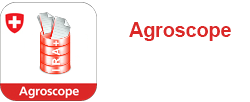Bringing innovations and novel technical applications into livestock production requires a series of development steps and approaches. A first step is to analyse benefits for the end-user from use of the technology. In a use case within the IoF2020 project, we addressed ways to give pig farmers more control of vulnerable production processes, which can improve competitiveness. The sow is the most important component of piglet production, so we focused particularly on sow health and farrowing. We assessed whether automatic and continuous monitoring would provide benefits to the farmer, since careful manual monitoring of sow health around farrowing is impractical. The major health issue in sows is post-partum dysgalactia syndrome (PPDS), a complex of diseases with vague symptoms that leads to reduced milk production, which has serious consequences for new-born piglets. Another issue is that prolonged farrowing can reduce the future fertility of the sow. Establishing a starting point for farrowing is important, as it can provide information on the progression of farrowing and indicate the need for extra assistance. We developed an ear tag with an inbuilt photoplethysmograph (PPG) and an accelerometer to monitor physiological parameters of the sow (level of activity, resting heart rate), since changes in resting heart rate are linked to health issues (e.g. fever) and the level of activity of the sow changes around farrowing. The system is intended for capture of reliable data under practical conditions from the sensors to a gateway. Technical testing included optimisation of battery life with respect to data collection and determining intervals for data transfer. Future development steps will include data analysis, information management and applications where the processed information is provided to farmers in near real-time.
Herlin A. H., Dasen S., Gomez I., Jara A.J., Cuevas Martinez I., Penaranda A., Bugueiro A., Ollagnier C., Liechti P., Jeanningros L., Moufawad El Achkar C., Verjus C.
Experiences of developing an innovative application of sensors to monitor the health and activity of the peri-partum sow.
In: Practical Precision Livestock Farming. Publ. T. Banhazi, V. Halas and F. Maroto-Molina, Wageningen Academic Publishers. 2022, 119-136.
Download english (618 kB)
Link: https://www.wageningenacademic.com/doi/abs/10.3920/978-90-8686-934-3_7
ISBN: 978-90-8686-382-2
Digital Object Identifier (DOI): https://doi.org/10.3920/978-90-8686-934-3_7
Publication-ID (Web Code): 50422 Sending by e-mail
Precedenti progetti










